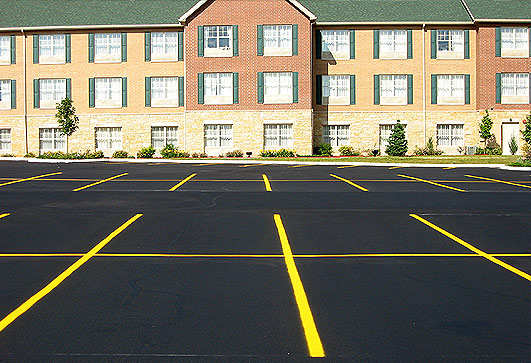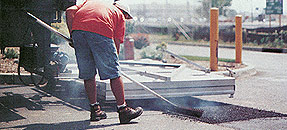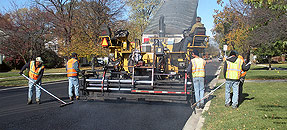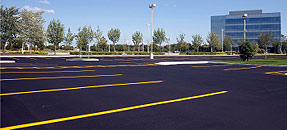Seamless infrared asphalt repairs are one of the most innovative and intriguing asphalt repair methods available in the asphalt industry today. Existing asphalt can be heated, rejuvenated and reused - all while getting rid of the cracks and potholes that cause safety and legal hazards.
Unlike the old "Saw cut - Remove - Replace" method, infrared repairs do not leave a cold seam around the outside (perimeter) of the repaired area. The cold seam can be a weak point and be make the repaired area susceptible to damage from water seepage and other weather-related elements. While the old method is suitable for some repairs, it has been replaced by a new, friendlier, more cost-effective and cleaner repair method.
The infrared asphalt equipment (sometimes called a recycler) heats the existing asphalt in and around the area of repair to well over 300 degrees Fahrenheit - the same temperature as new asphalt when it comes fresh from the plant and is first installed. At this temperature, the softened asphalt can be worked easier. A rejuvenation agent is mixed into the "scarified" asphalt to bring back the qualities of the old asphalt once heated. New hot asphalt may be added to bring a repair up to grade, if needed, before it is compacted.
The final result from the infrared repair is a cost-effective, long lasting and attractive repair that has recycled the existing asphalt - all while costing less money than replacement of the surface. This process allows recycling of the old, but perfectly good asphalt. It allows a seamless, clean repair while being ecologically friendly!
Asphalt pavement is utilized in a variety of different applications because of its durability, cost-effectiveness,simplicity of construction, and strength. Infrared Asphalt Repair It is the material of choice for parking lots across the nation because asphalt withstands heavier loads and, when combined with proper maintenance, lasts for many years.
In order to maximize the life of your asphalt parking lot, it is important to develop a pavement management plan involving routine inspections and ongoing preventative maintenance.
Infrared Asphalt Repair
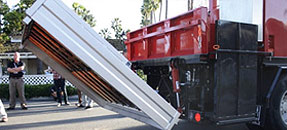
Infrared asphalt technology is an effective solution for critical repairs. This unique method blends hot-mix asphalt right in with the original and then compacts the area to create a seamless restoration. If you notice potholes--especially in high-traffic areas, pavement heaving, uneven surfaces surrounding catch basins (this is a common problem resulting after several freeze-thaw cycles), or rough surfaces in drive lanes or parking stalls, it is a good idea to consider infrared repair.
The area to be repaired will be swept or blown clean, removing all loose aggregate, sand, and/or water. The surface area will be heated to 325 degrees for 5-10 minutes depending on the depth, season, and existing aggregate (typically 1-to-3 inches). Once the repair area has been heated, it will be raked to remove failed aggregate and a rejuvenator will be applied to replenish lost oils due to oxidation. Additional material will be applied to the area, while raking and grading it to the proper level. Once the fresh material is placed, it will be compacted with a multi-ton vibratory roller and/or vibratory plate.
Infrared Benefits
Infrared rays allow deep penetration asphalt repair and reclaiming without causing burning, scaling, or separation of the asphalt from the aggregate. Additional benefits include: cost savings, as the project is completed with fewer raw materials; time savings, as this repair option takes less time than traditional asphalt resurfacing; seamless repairs, as the patch bonds to existing surface and produces no joints for water to penetrate; and fewer traffic interruptions, as the patch can be driven on almost immediately.



